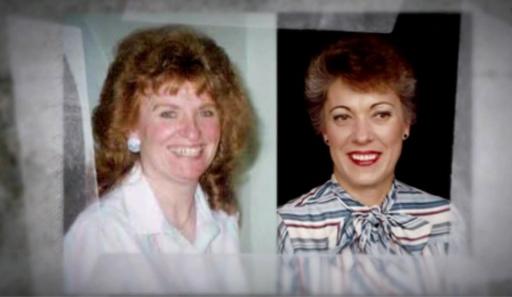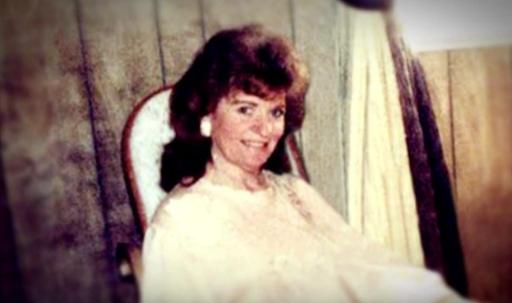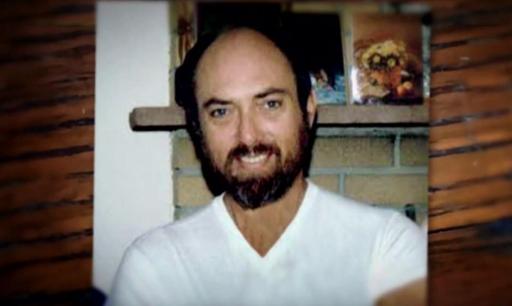‘On the Case With Paula Zahn: A Nightmare in Idaho Falls’ on Investigation Discovery tells the story of how Betty Grey and Reeda Roundy, two close friends, were killed inside a house in Idaho Falls, Idaho, in the latter part of July 1989. Even though the criminal was apprehended by the authorities within a few weeks of the incident, it took more than two years to amass enough evidence to prosecute them. We’ve got your back if you want to learn more about the case, including who the killer is. So let’s get started, shall we?
How Did Betty Gray and Reeda Roundy Die?
On June 12, 1942, Betty Lou Hales Grey was born in Long Beach, Los Angeles County, California, to parents Joseph Daniel Hales and Dorothy H Refine Hales. Following her graduation from Rancho High School in 1960, she wed Bill Grey, the proprietor of Jackson’s “Gray’s Pawn Shop,” on June 13 of that same year. The couple gave birth to their two children, Sara and Jeff, in Buena Park, California, where they lived until January 1978. Later, she obtained a certificate from Chaffey College, and in 1976, she started creating cakes.
The Greys opened ‘Gray’s Pawn Shop’ in Jackson in 1978 after relocating there, first at 70 South Glenwood Street and then on West Broadway. Betty continued to adorn cakes in Jackson, where she earned the adoring moniker “The Cake Lady.” Betty’s Cakes, a confectionery shop, was founded by her a few years before she tragically passed away. Joseph Reed Jensen and Rebecca Elma Miner Jensen welcomed Reeda Larene Jensen Roundy into the world on March 10, 1940 in Salt Lake City, Salt Lake County, Utah.
Betty and Reeda were close friends who frequently visited one another, according to Gerrie Casteel, one of Betty’s friends. For a family who had been abroad for a year, Reeda had been taking care of a home two miles east of Idaho Falls. Betty would see Reeda there every two months, Gerrie recalls. I am aware that she went there just before the summer to assist Reeda with moving in. So it came as a shock when the two pals were discovered dead on July 24, 1989, inside the Idaho Falls house. They both passed away as a result of a single 9mm pistol fire. “Satan loves you,” was written in human blood on the wall, according to the police.
Who Killed Betty Gray and Reeda Roundy?
Betty Grey allegedly met Reeda Roundy several years ago while on a business trip with her husband, William, according to Janice Roby, one of Betty Gray’s closest friends. He routinely transacted business with Reeda’s employer, the Idaho Falls distributor Fanning Wholesale Inc. Betty used to frequently visit Reeda, according to Janice, and on July 24, when they were both found dead, she was there. As soon as they discovered Betty was having an affair with LeRoy Leavitt and seeking a divorce, the police began to suspect William.
According to the prosecution, a furious William concocted a plan to murder his wife and took precautions to make sure he would not be discovered. He bought a 1971 International Travelall, which he then registered in his phoney name. He drove the car from his residence in Jackson Hole, Wyoming, to the Eastern Idaho Medical Centre in Idaho Falls, Idaho, in the early hours of July 24, 1989. Betty was spending the night at Reeda’s house, so he parked the car there and cycled his bicycle the last 3.6 kilometres there.
In an effort to dispel suspicions about himself, the prosecution theorised that William shot both ladies before setting up the scene to look like a ritualistic cult assassination. He then returned on his bike to his car, which was waiting for him at the Medical Centre, and drove it back to Jackson Hole. Steve Mackley, a security officer at the Eastern Idaho Medical Centre, was the prosecution’s pivotal witness that resulted in William’s eventual arrest. Around three in the morning on July 24, he claimed to have observed a middle-aged man riding a bicycle into the medical center’s parking area.
When Steve witnessed the person load the bicycle into a car with Wyoming licence plates, he was curious. In other comments, the guard identified the vehicle as a Jeep, a “Suburban-type” car, or even an International. He approached the man, suspicious of the entire situation, and spoke with him for about a minute while shining a spotlight in his face because it was dark in the parking lot. Steve described the individual as a middle-aged Caucasian man with glasses and a medical ID bracelet.
He appeared to be out of breath, had rose red cheeks, and was heavily perspiring. According to Steve’s statement to the police, the man claimed to be picking up the car for friends from Jackson Hole, Wyoming. When word of the double homicide spread, Steve did not quite believe him and called the police right away. The security guard assisted the police in putting together a composite drawing of the unknown individual, and three days later, he recognised William in a lineup of five people in a photograph.
Once more by chance, Steve encountered William at a medical facility and knew right once that he was the cyclist from the medical centre parking lot. It was because of his evidence that William was apprehended on accusations of first-degree murder. Despite the fact that the police were also investigating Reeda’s previous partner as a potential suspect, Steve’s unmistakable identification of William allowed them to narrow their attention to him. Additionally, they discovered that he had made up stories regarding his ownership of the Travelall, the motivation for it, and what had happened to the car.
Where is William Gray Now?
William Grey was accused of committing two first-degree murders. During his trial, Betty’s sister alleged that Betty had spoken to him about her intentions to get a divorce and remarry, and he was aware of the relationship. His defence attorney intended to provide material that suggested potential co-defendants. The presiding judge, however, disregarded Reeda’s purported claims to have told family members prior to her passing that an ex-boyfriend had threatened to kill her as hearsay. William was found guilty and given a life sentence. The convictions were upheld by a state appeals court, and the Supreme Court followed suit in October 1977.



